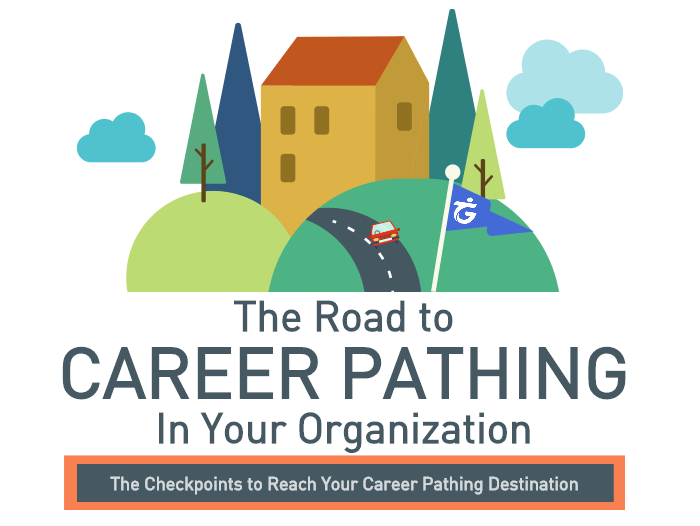Using Career Paths to Address Skill and Competency Gaps

Using Career Paths to Address Skill and Competency Gaps
Approximately 10,000 baby boomers retire each day in the United States. That’s about 30,000 skilled workers per month. And, while there are around 8.7 million people available for work in this country, there are far fewer who have the skills to fill those openings left behind by the Boomers.
Skill gaps cost the U.S. economy about $13 billion per month. To thrive in their industries, companies must address these gaps. Doing so means partnering with educational and development organizations and doing one thing many companies just don’t know how to do—creating the talent needed for key roles by training and promoting the candidates already available.
Nearly three out of four U.S. employees are open to hearing about new opportunities, according to latest surveys. Effective companies will harness those wandering eyes—and ensure their own success—by providing the opportunity for employees to grow and advance past their current roles within their current companies.
Many employees don’t believe they are capable of advancement, because they don’t have the information necessary to move along their career paths. This keeps employees in a holding pattern, which kills engagement, and hinders employers’ abilities to move talent into essential open roles. By providing the right resources and visibility into open roles and competencies, employers can address these obstacles, helping employees obtain the information they need and filling needed skill shortages at the same time. An effective career pathing program is key.
Managers often are able to point employees in the right direction by offering information on major skills shortages or providing access to learning resources. Many times, however, the gaps between where an employee is and where he or she wants to go are small and numerous. A manager may not have the time or the knowledge needed to be able to point out them all.
A comprehensive career pathing software program, however, can look at an employee’s individual talent profile and then compare his or her current competencies, piece by piece, to the competencies required for success in the individual employee’s specific next step. This provides the employee with extensive knowledge into the gaps that need to be filled, an extensiveness that would simply take too much of a manager’s limited resources to achieve. It also enables managers to focus their attentions on what gets the best results—coaching.
Managers can utilize the software’s detailed skill gap analysis to walk employees through the experiences needed for advancement at a level that best fosters understanding and development. Managers also can use the detailed analyses to better track employees’ progress toward their goals and to help employees see where and how they’re making the most progress. This reduces learning time and propels employees along their chosen paths at a faster rate.
Such software also provides additional, targeted learning resources for addressing gaps, instantly putting the power of advancement into the employee’s hands. This enables employees to take immediate action to improve their skill set via mentoring, coaching, and additional training. Such motivation plus the tools necessary to realize those ambitions equals an unstoppable force for employees and companies alike.
To learn more about the benefits of Career Pathing, visit our Learning Center.
If you are ready to start address skill and competency gaps and start a Career Pathing software initiative, visit our Career Pathing software page, or request a demo.
See a preview of TalentGuard’s platform
Career Pathing Definition Explained Clearly for 2025
Starting a career pathing program at your organization is not a difficult journey but there are checkpoints that need to be reached in order to complete the trip to your final destination. View this infographic to learn where you need to go and what you need to do when you’re on The Road to Career Pathing In Your Organization!
Career Ladder vs. Lattice: Understanding the Difference 2025
Career development is essential to today’s workers. Employees are eager to grow in their careers and advance within their organizations. Companies unable to facilitate that growth will continue to be plagued with engagement and retention problems. There are two main options for moving a career forward – up the career ladder or through the career lattice. But what does that growth look like?
Employees Develop Career Paths and Stay Longer
Employees want to understand what is required of them to change roles or advance in their careers but the necessary processes may not be in place. By understanding how to help employees develop career paths, you will soon be able to provide employees with a clear road map to career development and growth. If employees are left to guess and wonder what steps they need to take, you will likely find them moving to another company that can meet their needs.


